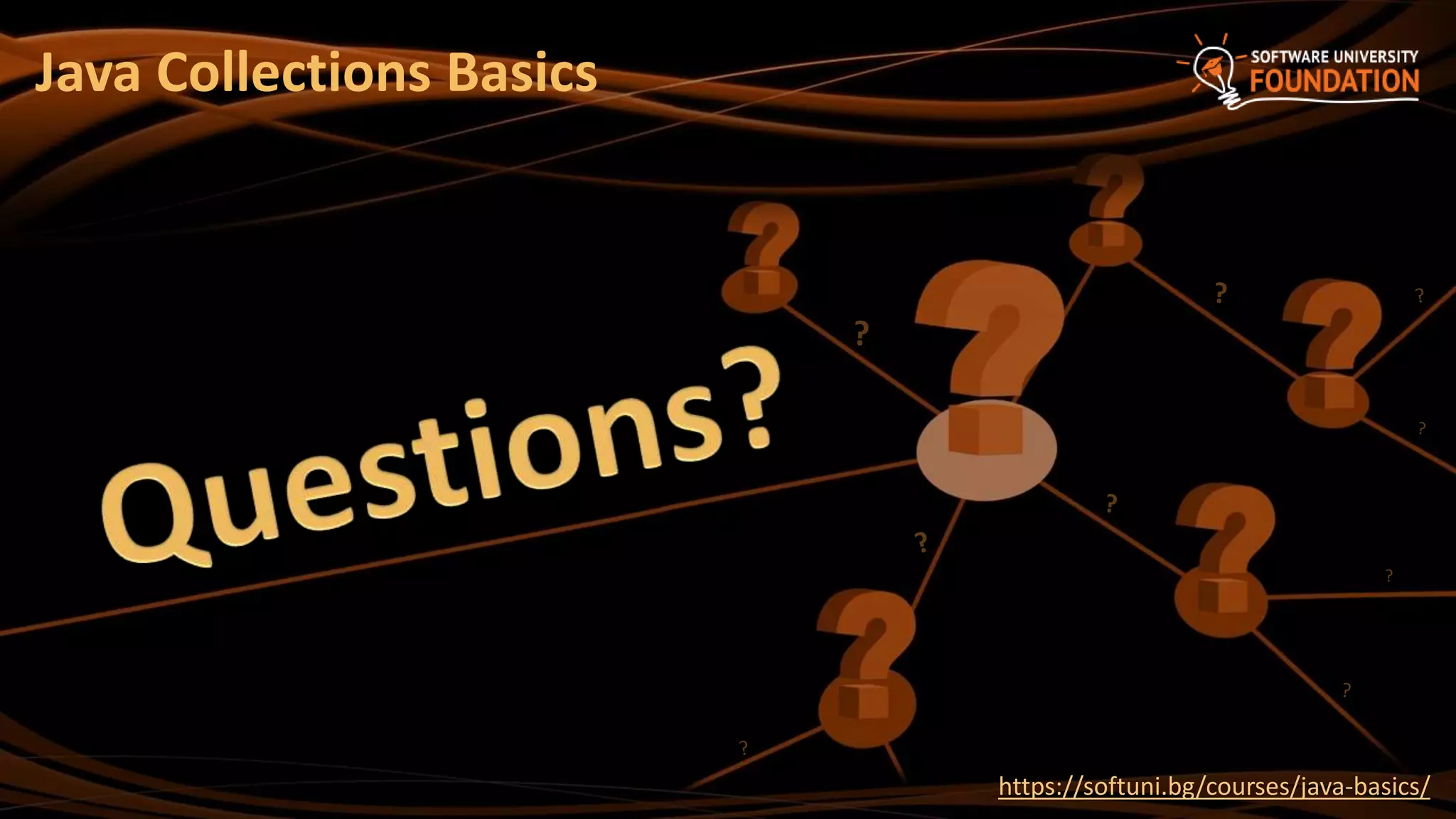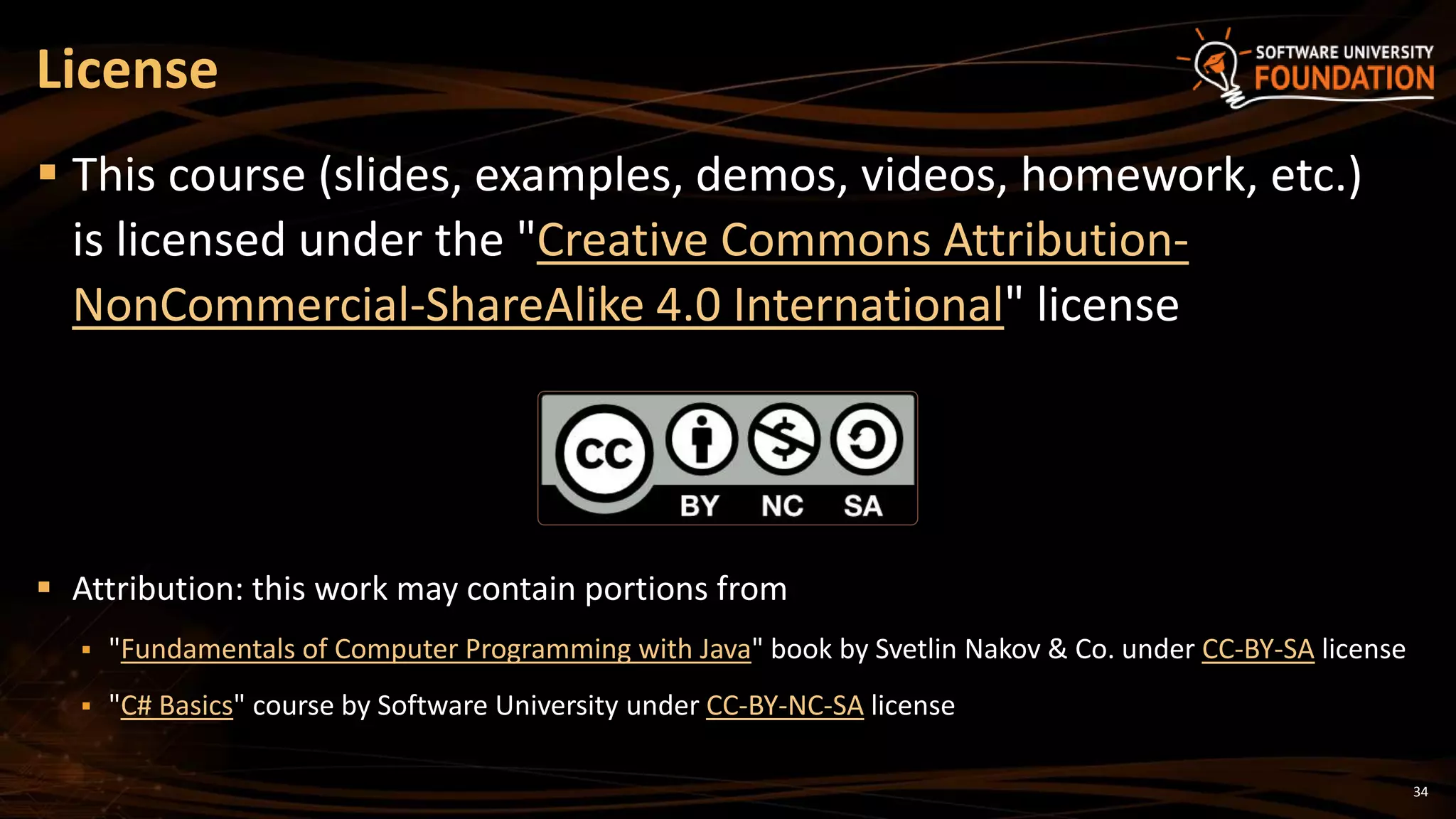This document provides an overview of Java collections basics, including arrays, lists, strings, sets, and maps. It defines each type of collection and provides examples of how to use them. Arrays allow storing fixed-length sequences of elements and can be accessed by index. Lists are like resizable arrays that allow adding, removing and inserting elements using the ArrayList class. Strings represent character sequences and provide various methods for manipulation and comparison. Sets store unique elements using HashSet or TreeSet. Maps store key-value pairs using HashMap or TreeMap.

![2
1. Arrays
int[], String[], etc.
2. Lists
ArrayList<E>
3. Strings
String str = "Hello";
4. Sets
HashSet<E>, TreeSet<E>
5. Maps
HashMap<K, V>, TreeMap<K, V>
Table of Contents](https://image.slidesharecdn.com/4-200321135602/75/07-Java-Array-Set-and-Maps-2-2048.jpg)
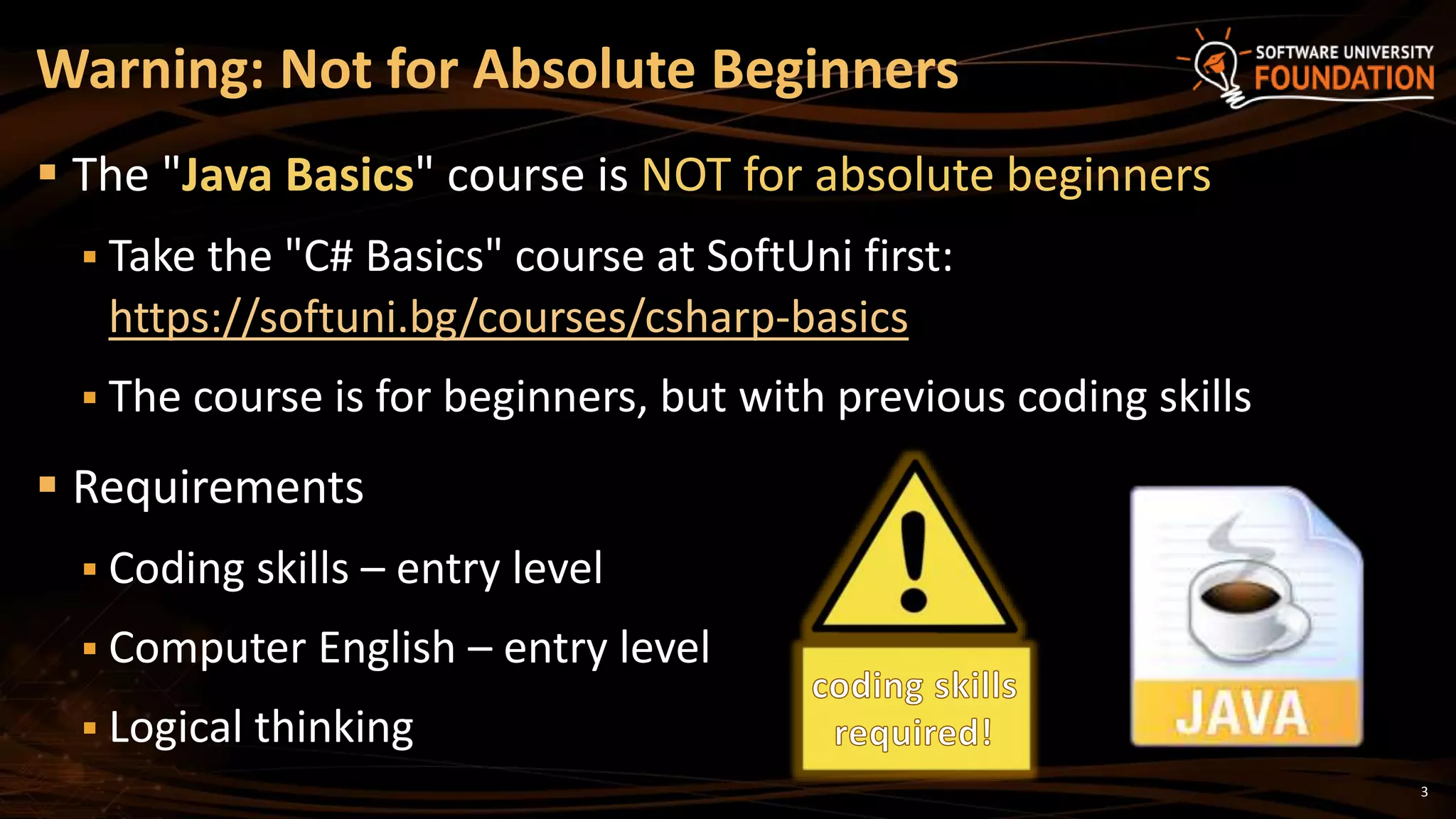
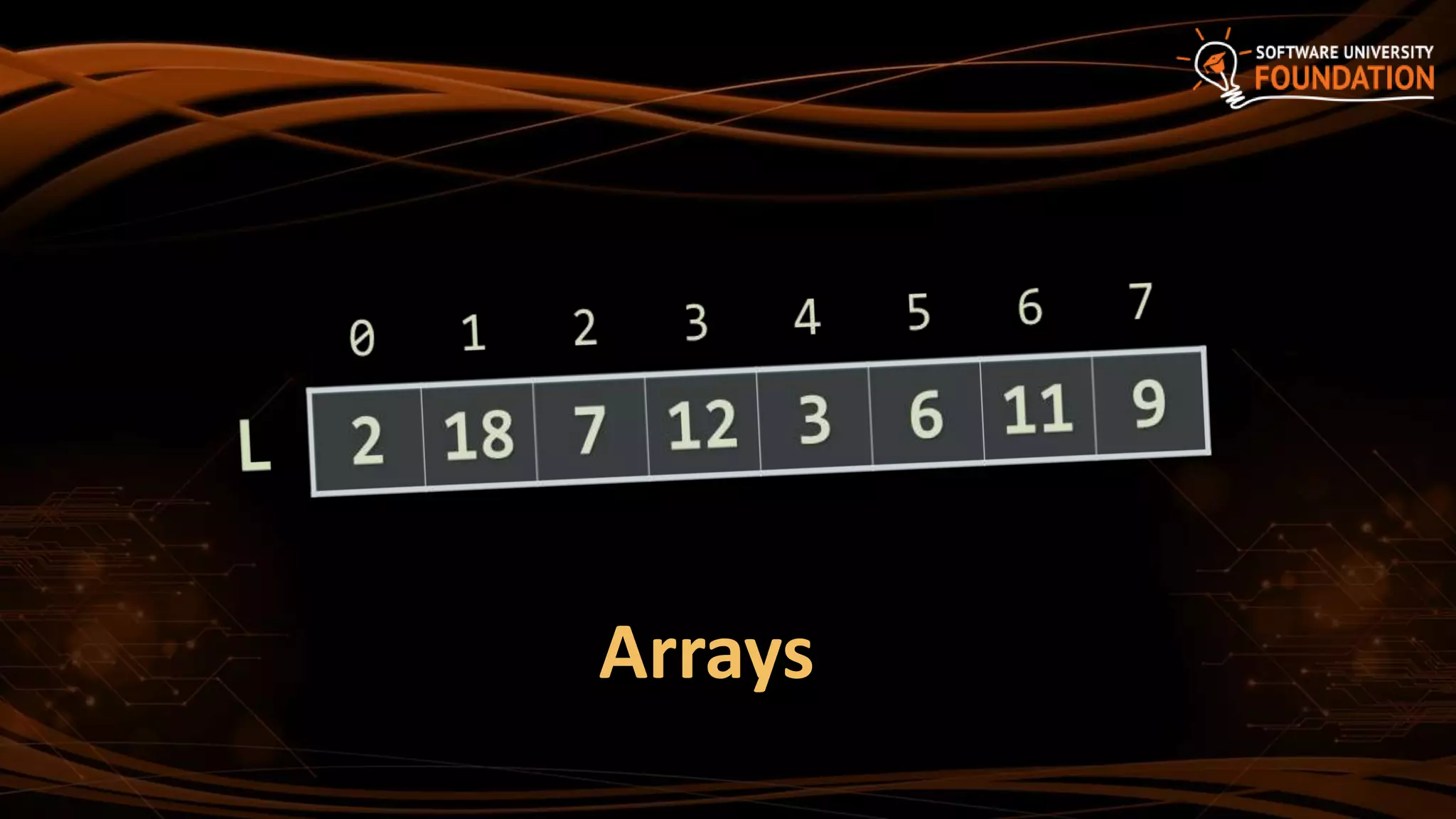
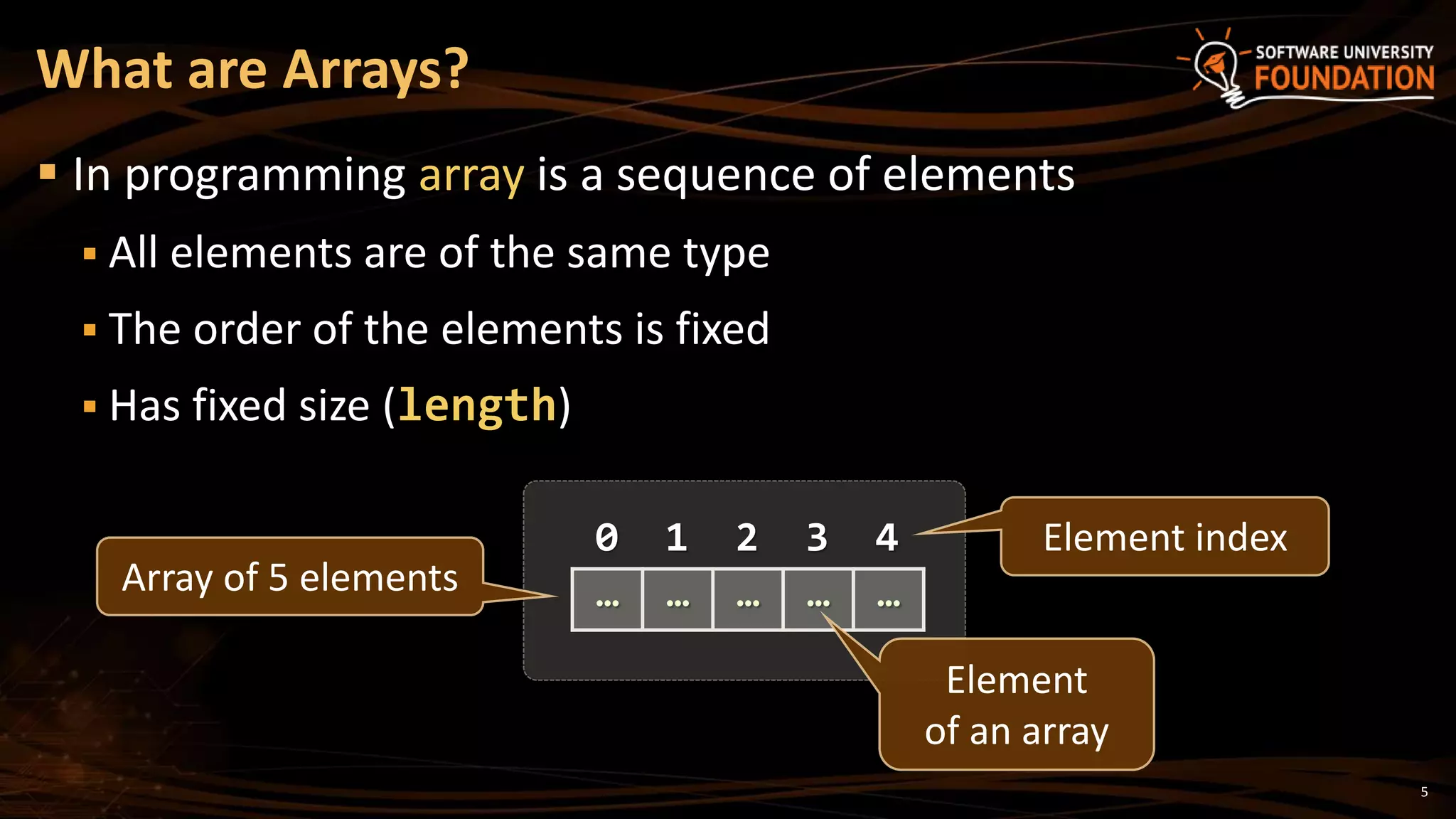
![6
Allocating an array of 10 integers:
Assigning values to the array elements:
Accessing array elements by index:
Working with Arrays in Java
int[] numbers = new int[10];
for (int i=0; i<numbers.length; i++)
numbers[i] = i+1;
numbers[3] = 20;
numbers[5] = numbers[2] + numbers[7];](https://image.slidesharecdn.com/4-200321135602/75/07-Java-Array-Set-and-Maps-6-2048.jpg)
![7
You may define an array of any type, e.g. String:
Arrays of Strings
String[] names = { "Peter", "Maria", "Katya", "Todor" };
for (int i = 0; i<names.length; i++) {
System.out.printf("names[%d] = %sn", i, names[i]);
}
for (String name : names) {
System.out.println(name);
}
names[4] = "Nakov"; // ArrayIndexOutOfBoundsException
names.length = 5; // array.length is read-only field](https://image.slidesharecdn.com/4-200321135602/75/07-Java-Array-Set-and-Maps-7-2048.jpg)
![8
Read, Sort and Print Array of n Strings
Scanner scanner = new Scanner(System.in);
int n = scanner.nextInt();
scanner.nextLine();
String[] lines = new String[n];
for (int i = 0; i < n; i++) {
lines[i] = scanner.nextLine();
}
Arrays.sort(lines);
for (int i = 0; i < lines.length; i++) {
System.out.println(lines[i]);
}](https://image.slidesharecdn.com/4-200321135602/75/07-Java-Array-Set-and-Maps-8-2048.jpg)
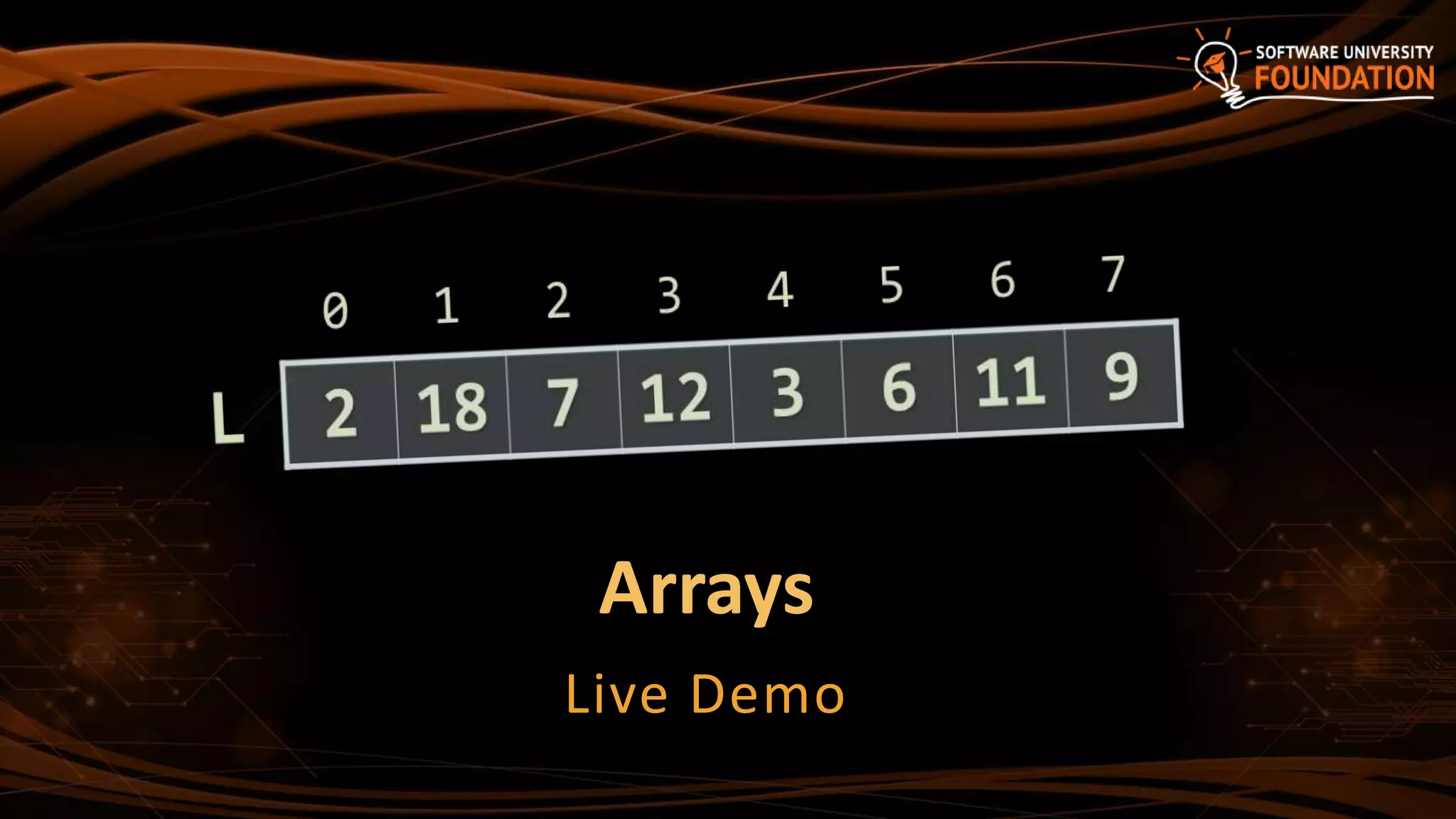
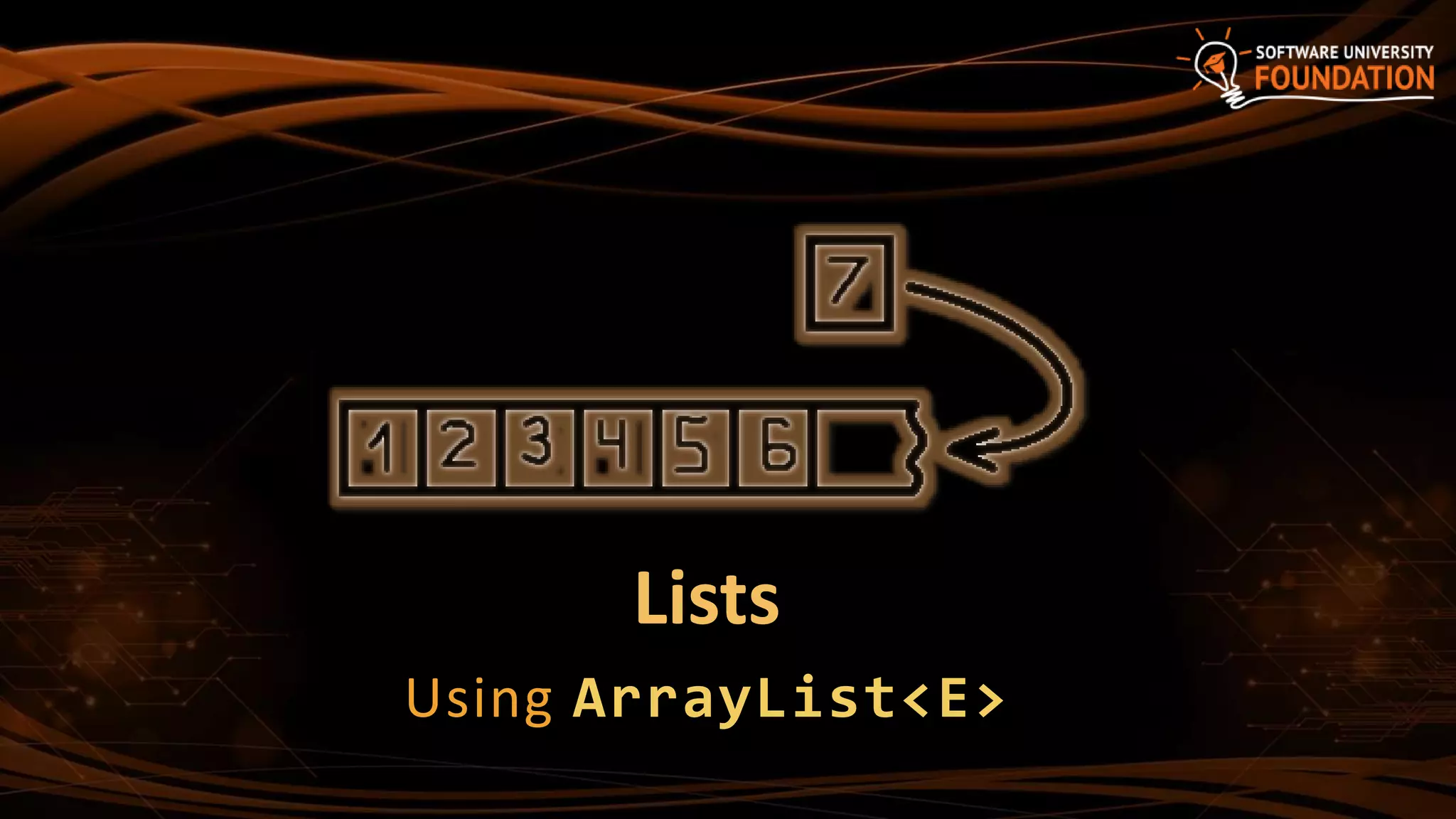
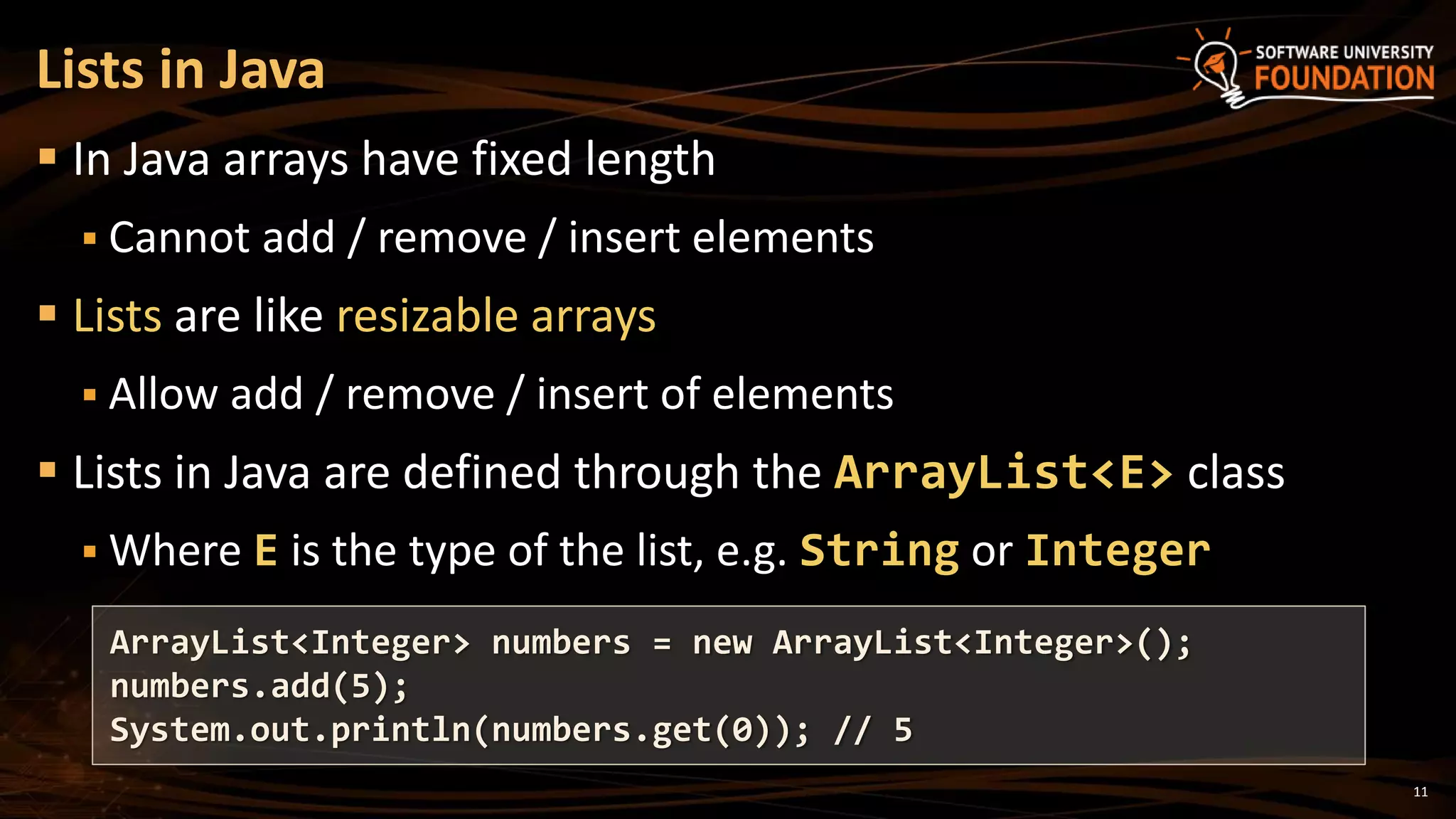
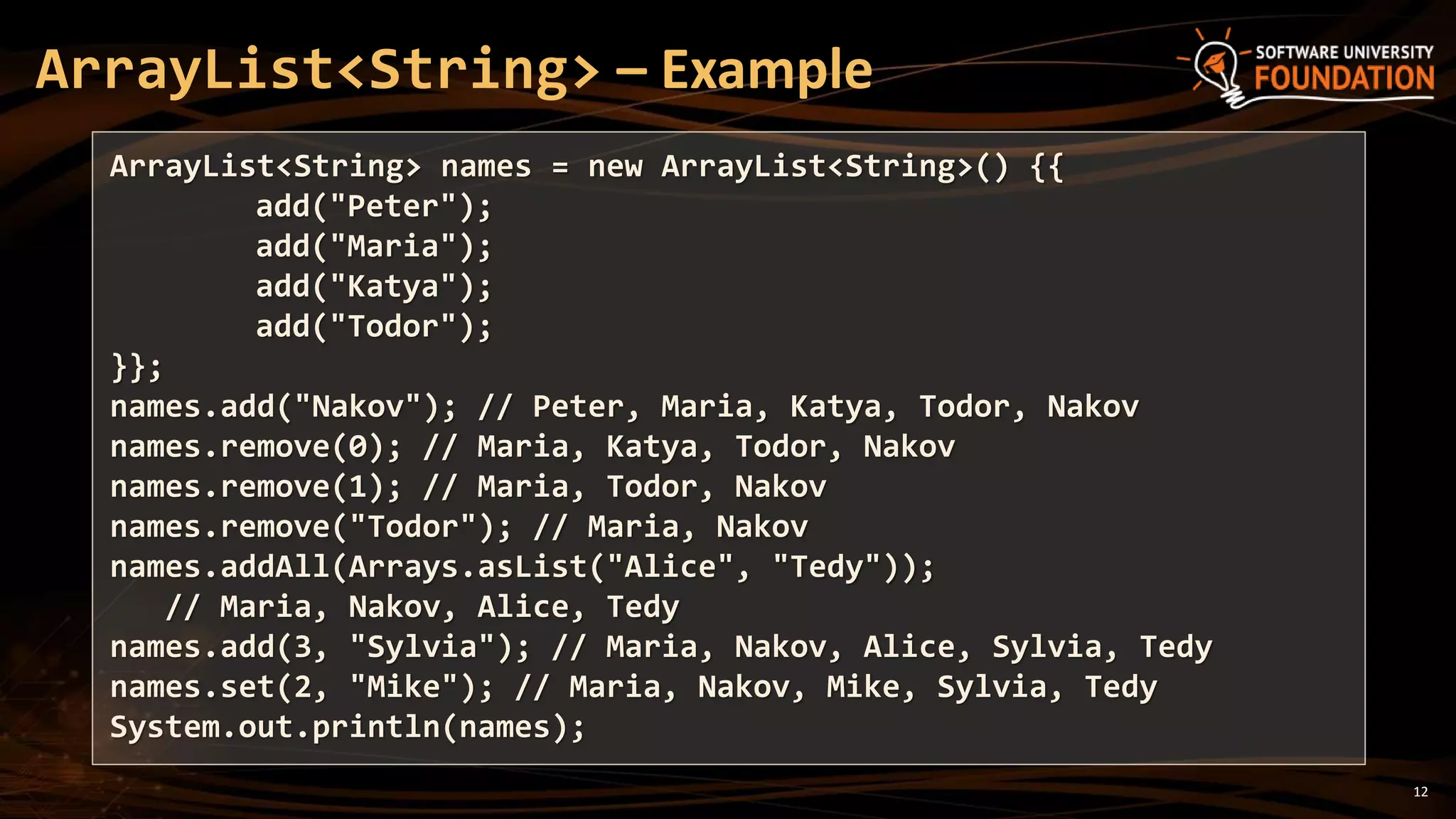
![13
ArrayList<Integer> – Example
// This will not compile!
ArrayList<int> intArr = new ArrayList<int>();
ArrayList<Integer> nums = new ArrayList<>(
Arrays.asList(5, -3, 10, 25));
nums.add(55); // 5, -3, 10, 25, 55
System.out.println(nums.get(0)); // 5
System.out.println(nums); // [5, -3, 10, 25, 55]
nums.remove(2); // 5, -3, 25, 55
nums.set(0, 101); // 101, -3, 25, 55
System.out.println(nums); // [101, -3, 25, 55]](https://image.slidesharecdn.com/4-200321135602/75/07-Java-Array-Set-and-Maps-13-2048.jpg)

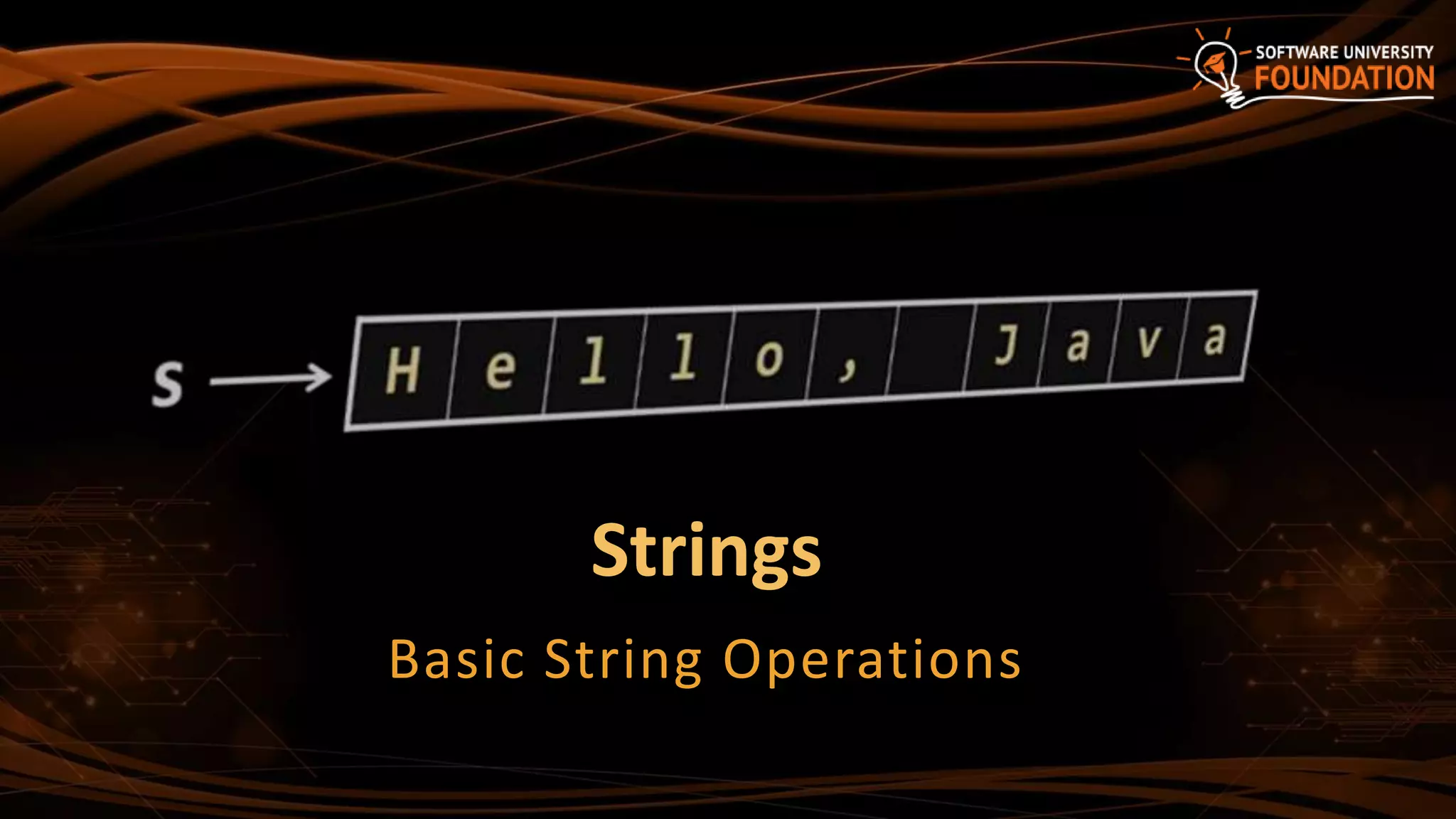
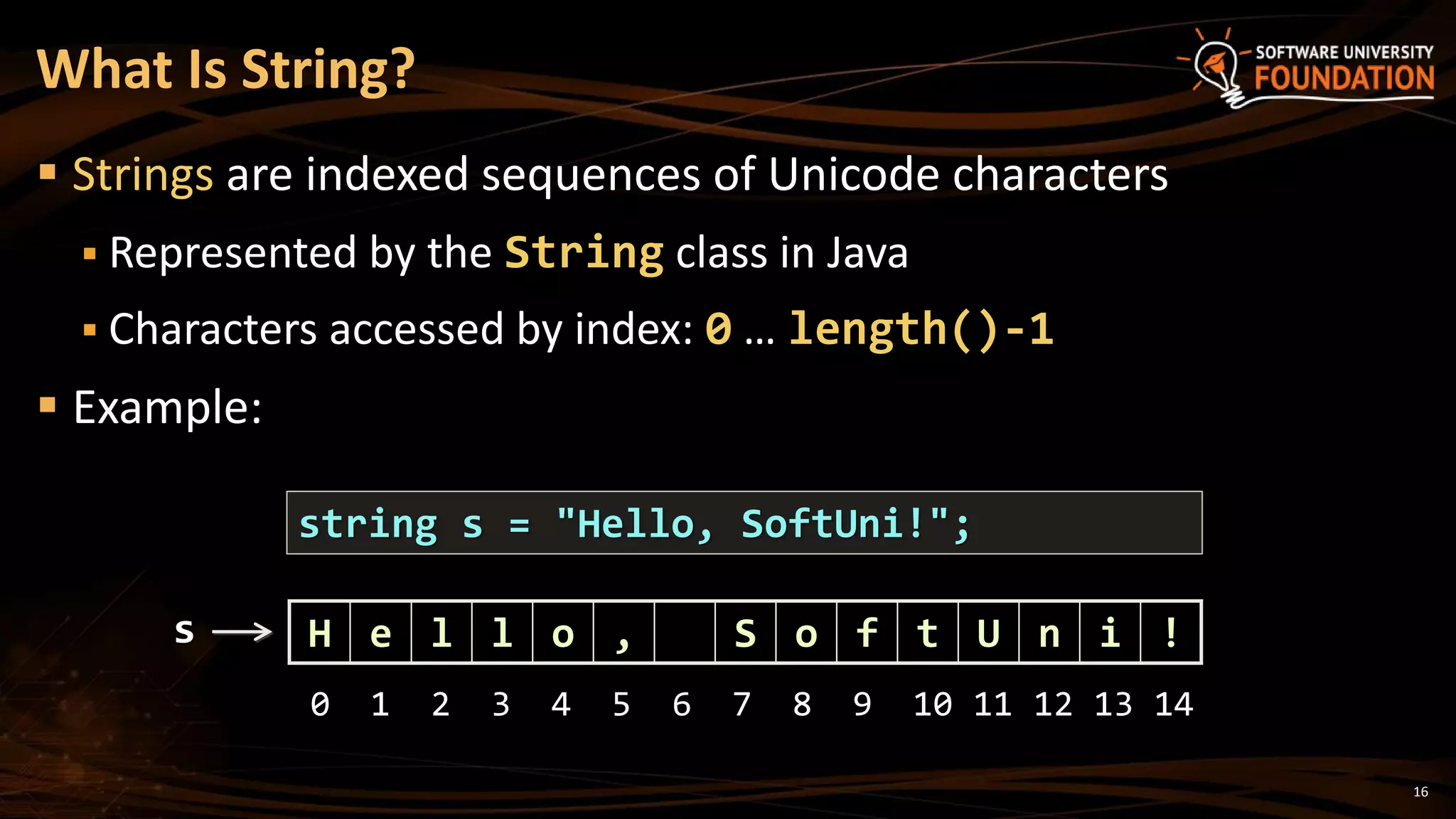
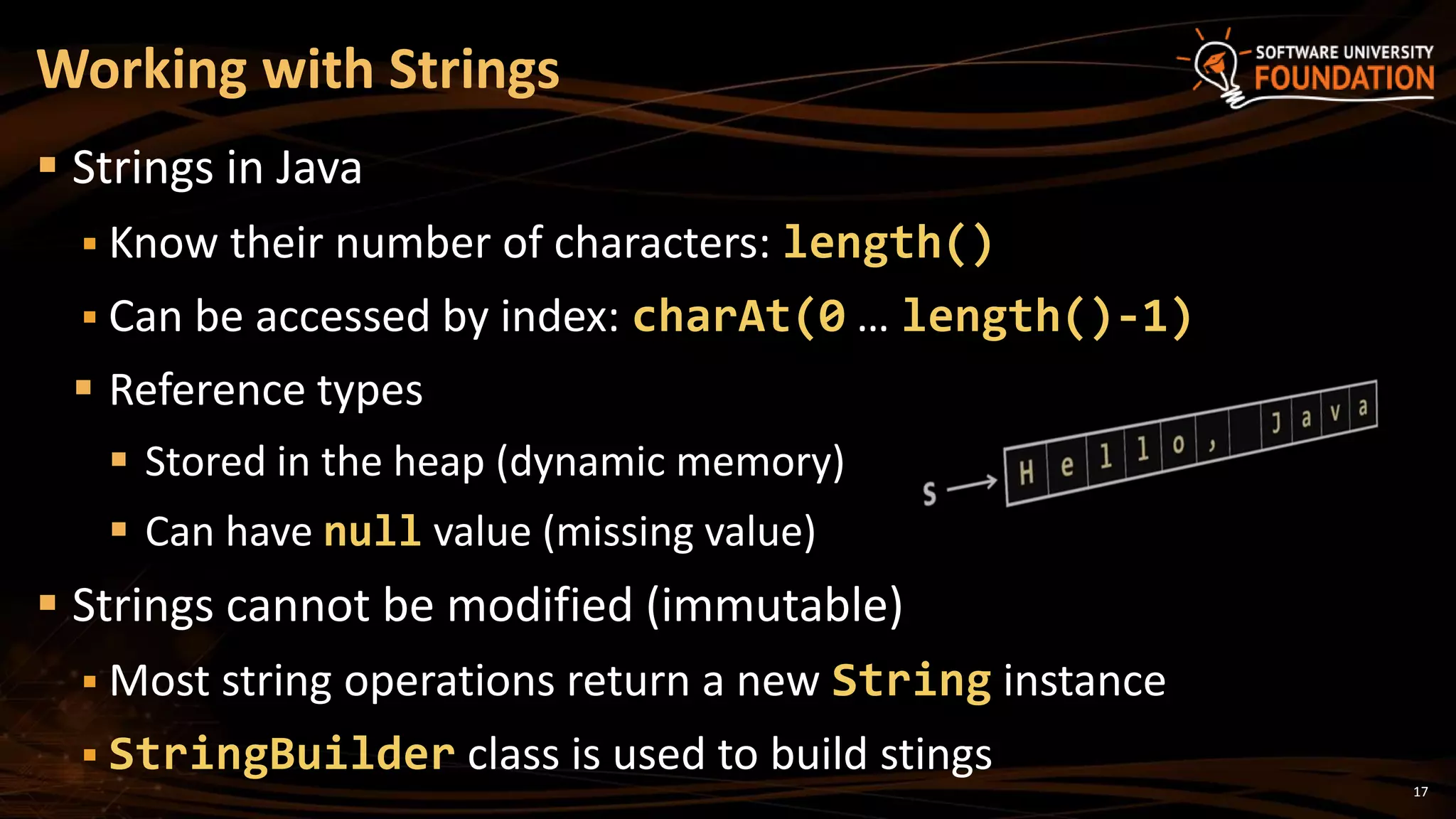
![18
Strings – Examples
String str = "SoftUni";
System.out.println(str);
for (int i = 0; i < str.length(); i++) {
System.out.printf("str[%d] = %sn", i, str.charAt(i));
}
System.out.println(str.indexOf("Uni")); // 4
System.out.println(str.indexOf("uni")); // -1 (not found)
System.out.println(str.substring(4, 7)); // Uni
System.out.println(str.replace("Soft", "Hard")); // HardUni
System.out.println(str.toLowerCase()); // softuni
System.out.println(str.toUpperCase()); // SOFTUNI](https://image.slidesharecdn.com/4-200321135602/75/07-Java-Array-Set-and-Maps-18-2048.jpg)
![19
Strings – Examples (2)
String firstName = "Steve";
String lastName = "Jobs";
int age = 56;
System.out.println(firstName + " " + lastName +
" (age: " + age + ")"); // Steve Jobs (age: 56)
String allLangs = "C#, Java; HTML, CSS; PHP, SQL";
String[] langs = allLangs.split("[, ;]+");
for (String lang : langs) {
System.out.println(lang);
}
System.out.println("Langs = " + String.join(", ", langs));
System.out.println(" nn Software University ".trim());](https://image.slidesharecdn.com/4-200321135602/75/07-Java-Array-Set-and-Maps-19-2048.jpg)
![20
The == operator does not work correctly for strings!
Use String.equals(String) and String.compareTo(String)
Comparing Strings in Java
String[] words = "yes yes".split(" ");
System.out.println("words[0] = " + words[0]); // yes
System.out.println("words[1] = " + words[0]); // yes
System.out.println(words[0] == words[1]); // false
System.out.println(words[0].equals(words[1])); // true
System.out.println("Alice".compareTo("Mike")); // < 0
System.out.println("Alice".compareTo("Alice")); // == 0
System.out.println("Mike".compareTo("Alice")); // > 0](https://image.slidesharecdn.com/4-200321135602/75/07-Java-Array-Set-and-Maps-20-2048.jpg)
![21
Regular expressions match text by pattern, e.g.
[0-9]+ matches a non-empty sequence of digits
[a-zA-Z]* matches a sequence of letters (including empty)
[A-Z][a-z]+ [A-Z][a-z]+ matches a name (first name +
space + last name)
s+ matches any whitespace; S+ matches non-whitespace
d+ matches digits; D+ matches non-digits
w+ matches letters (Unicode); W+ matches non-letters
+d{1,3}([ -]*[0-9]+)+ matches international phone
Regular Expressions](https://image.slidesharecdn.com/4-200321135602/75/07-Java-Array-Set-and-Maps-21-2048.jpg)
![22
Validation by Regular Expression – Example
import java.util.regex.*;
…
String regex = "+d{1,3}([ -]*[0-9]+)+";
System.out.println("+359 2 981-981".matches(regex)); // true
System.out.println("invalid number".matches(regex)); // false
System.out.println("+359 123-".matches(regex)); // false
System.out.println("+359 (2) 981 981".matches(regex)); // false
System.out.println("+44 280 11 11".matches(regex)); // true
System.out.println("++44 280 11 11".matches(regex)); // false
System.out.println("(+49) 325 908 44".matches(regex)); // false
System.out.println("+49 325 908-40-40".matches(regex)); // true](https://image.slidesharecdn.com/4-200321135602/75/07-Java-Array-Set-and-Maps-22-2048.jpg)
![23
Find Matches by Pattern – Example
import java.util.regex.*;
…
String text =
"Hello, my number in Sofia is +359 894 11 22 33, " +
"but in Munich my number is +49 89 975-99222.";
Pattern phonePattern = Pattern.compile(
"+d{1,3}([ -]*([0-9]+))+");
Matcher matcher = phonePattern.matcher(text);
while (matcher.find()) {
System.out.println(matcher.group());
}
// +359 894 11 22 33
// +49 89 975-99222](https://image.slidesharecdn.com/4-200321135602/75/07-Java-Array-Set-and-Maps-23-2048.jpg)
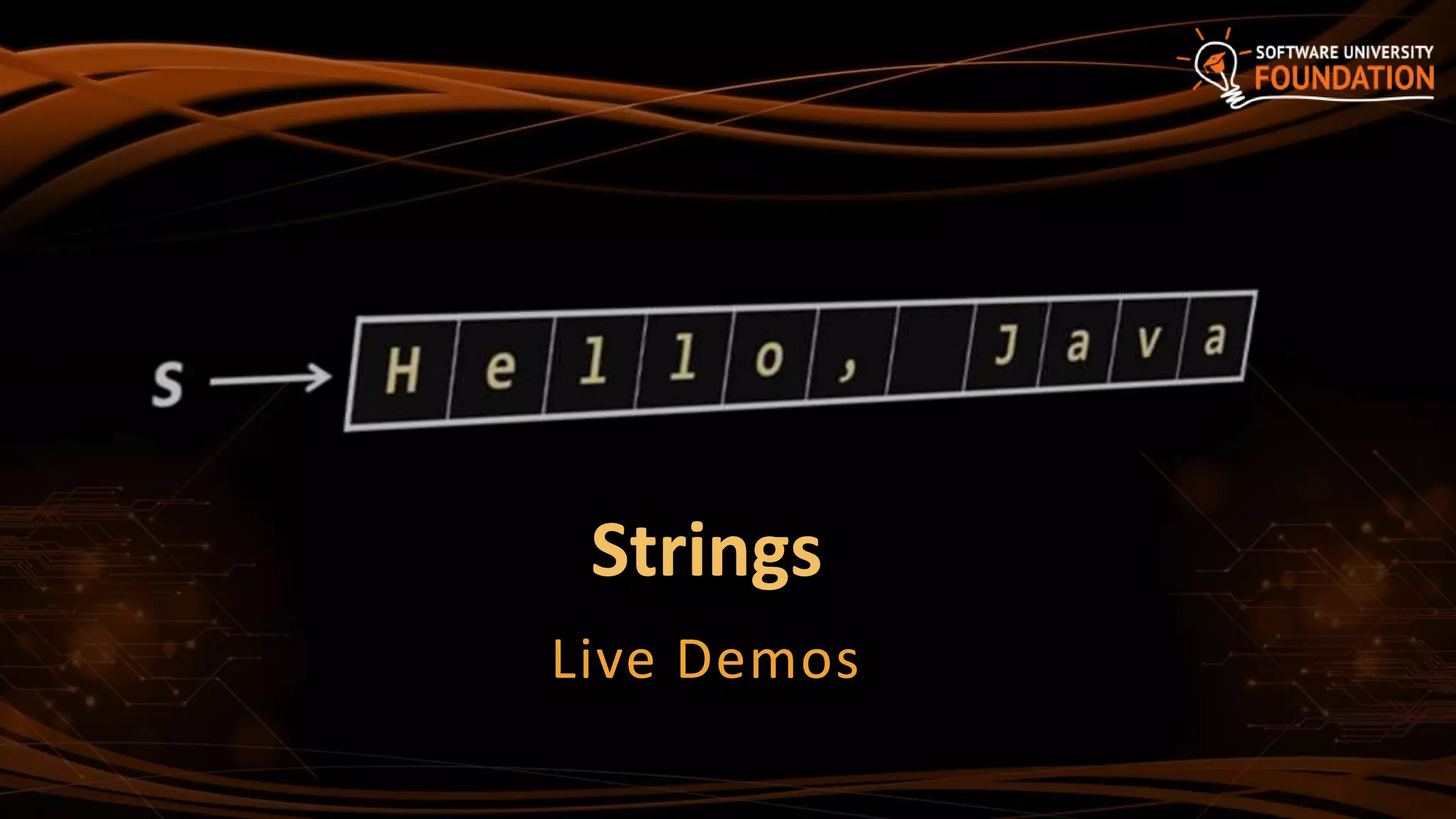
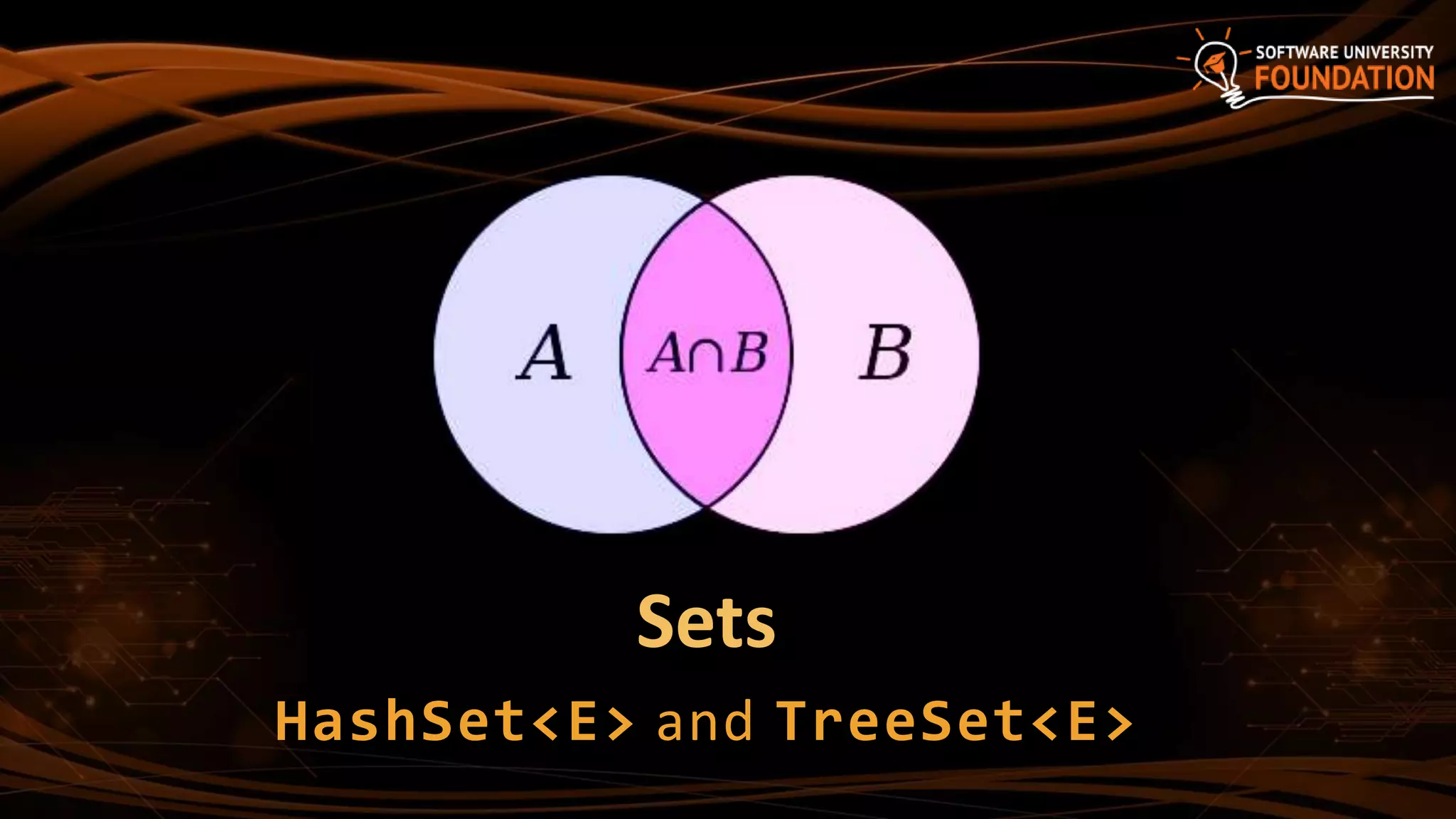
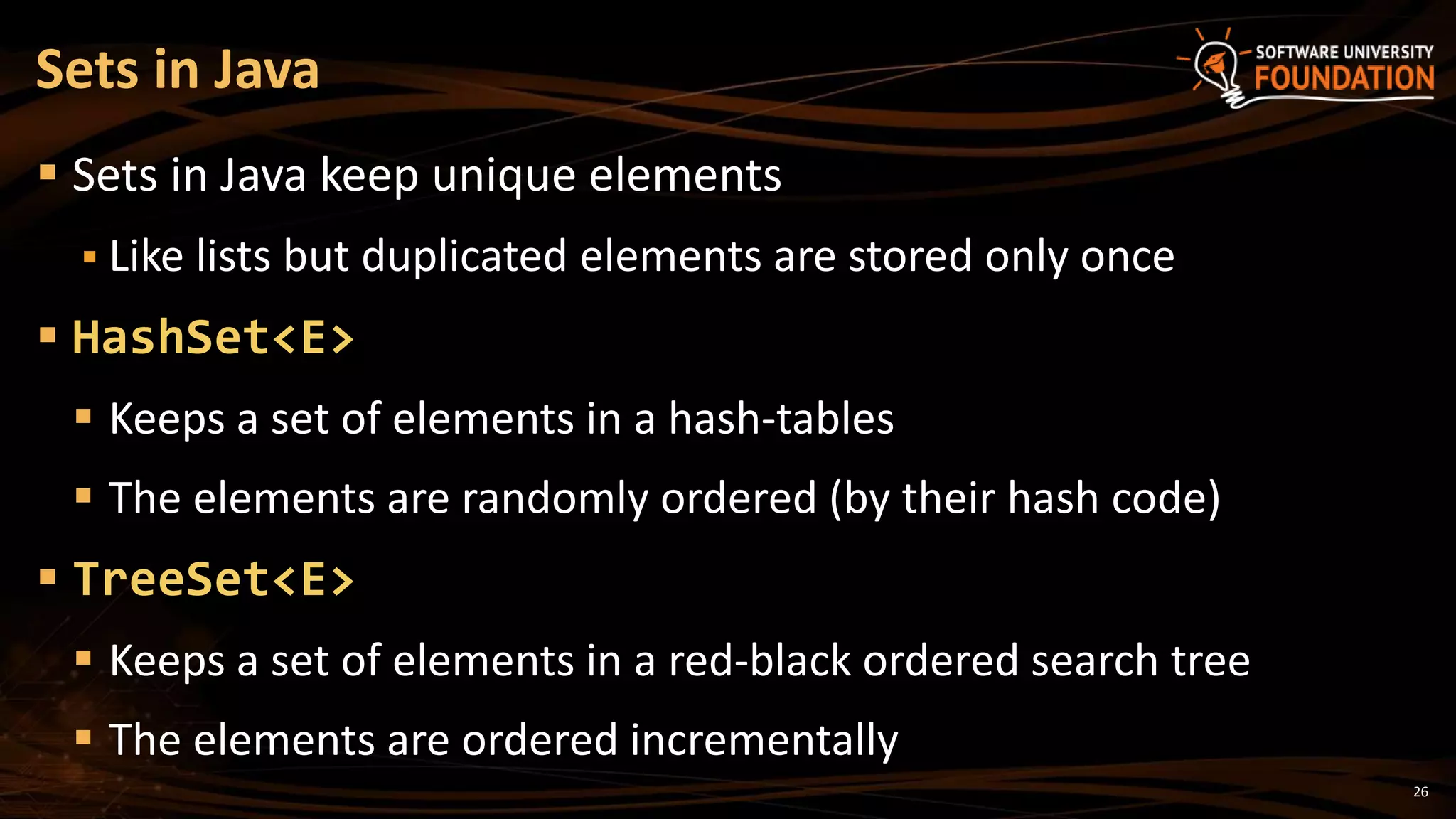
![27
HashSet<E> and TreeSet<E> – Examples
Set<String> set = new TreeSet<String>();
set.add("Pesho");
set.add("Tosho");
set.add("Pesho");
set.add("Gosho");
set.add("Maria");
set.add("Alice");
set.remove("Pesho");
System.out.println(set); // [Alice, Gosho, Maria, Tosho]](https://image.slidesharecdn.com/4-200321135602/75/07-Java-Array-Set-and-Maps-27-2048.jpg)
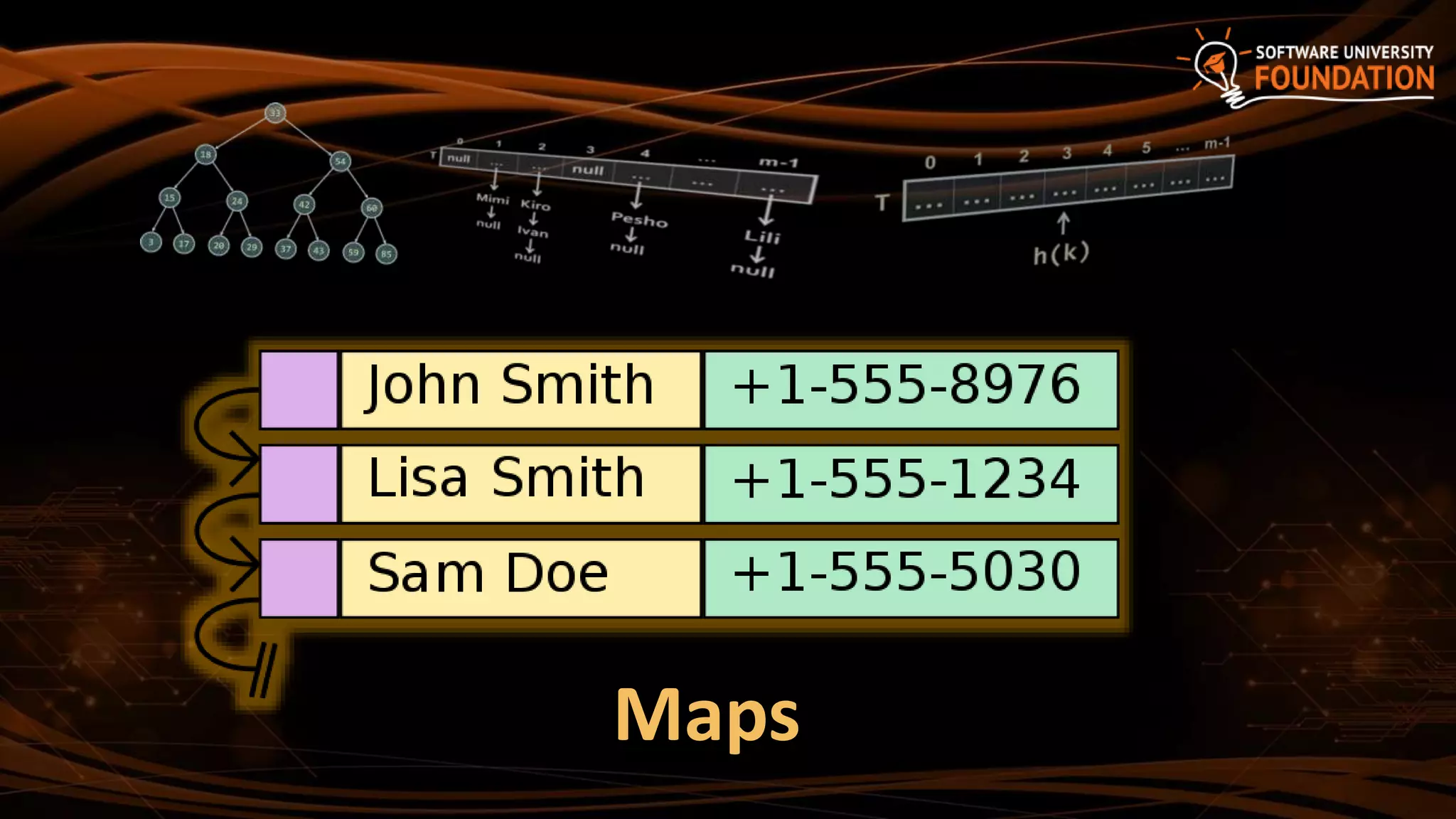
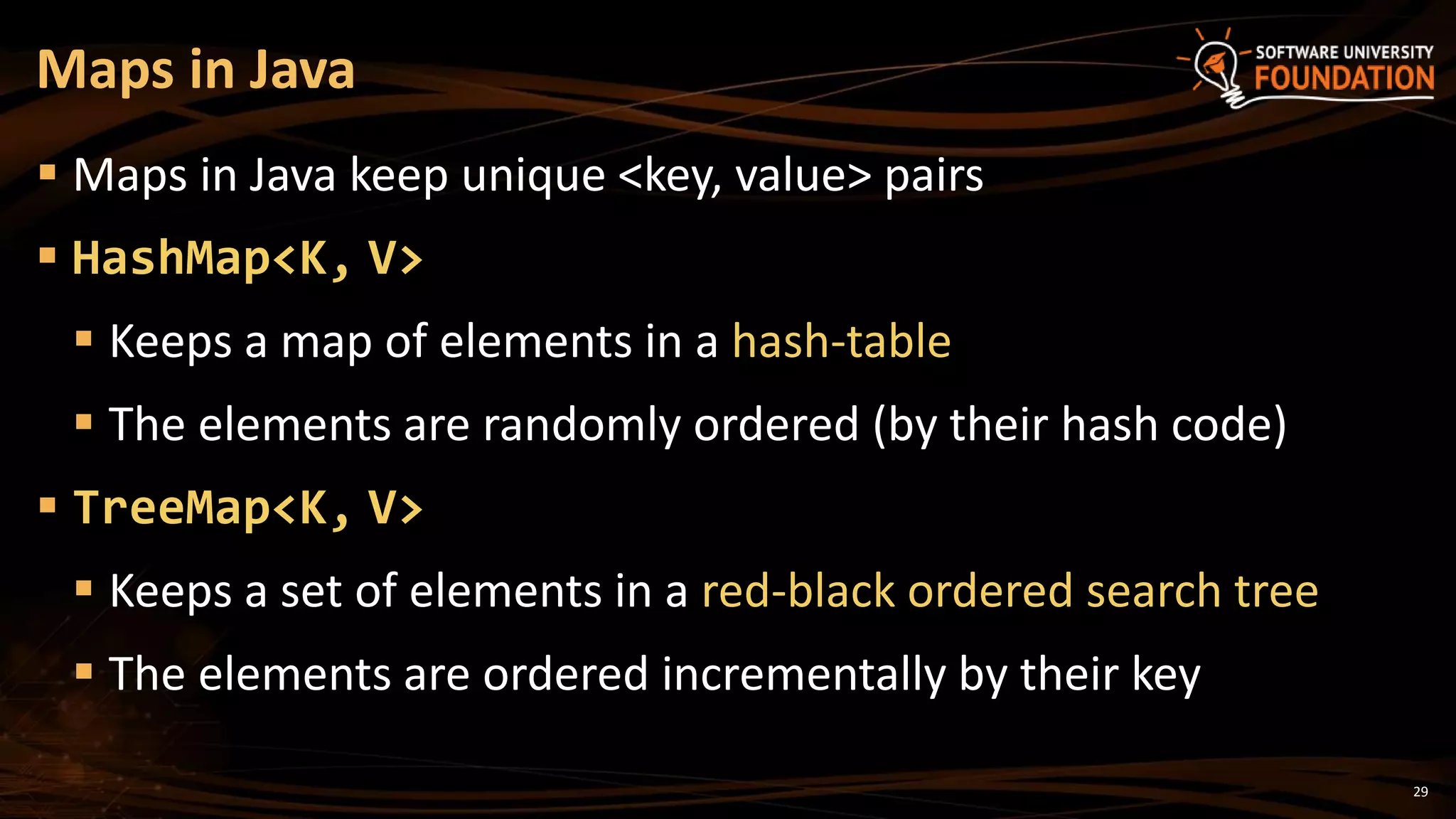
![30
Counting words occurrences in a list:
HashMap<K, V> – Examples
String[] words = { "yes", "hi", "hello", "hi", "welcome",
"yes", "yes", "welcome", "hi", "yes", "hello", "yes" };
Map<String, Integer> wordsCount = new HashMap<String, Integer>();
for (String word : words) {
Integer count = wordsCount.get(word);
if (count == null) {
count = 0;
}
wordsCount.put(word, count+1);
}
System.out.println(wordsCount); // {hi=3, yes=5, hello=2, welcome=2}](https://image.slidesharecdn.com/4-200321135602/75/07-Java-Array-Set-and-Maps-30-2048.jpg)
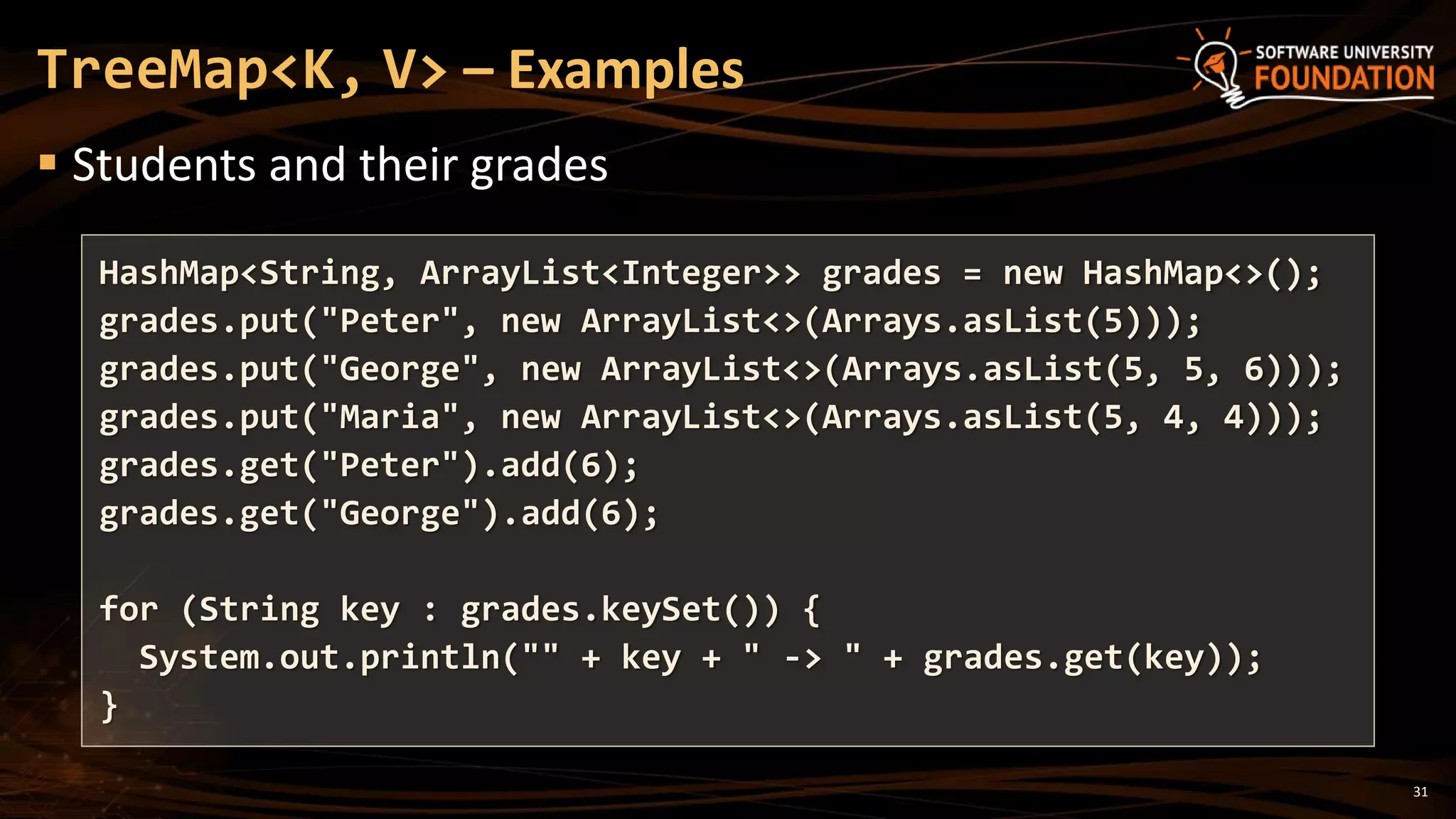
![32
Arrays, Strings and Collections:
1. Arrays: int[], String[], etc.
2. Strings: String str = "Hello";
3. Lists: ArrayList<E>
4. Sets: HashSet<E>, TreeSet<E>
5. Maps: HashMap<K, V>, TreeMap<K, V>
Summary](https://image.slidesharecdn.com/4-200321135602/75/07-Java-Array-Set-and-Maps-32-2048.jpg)
